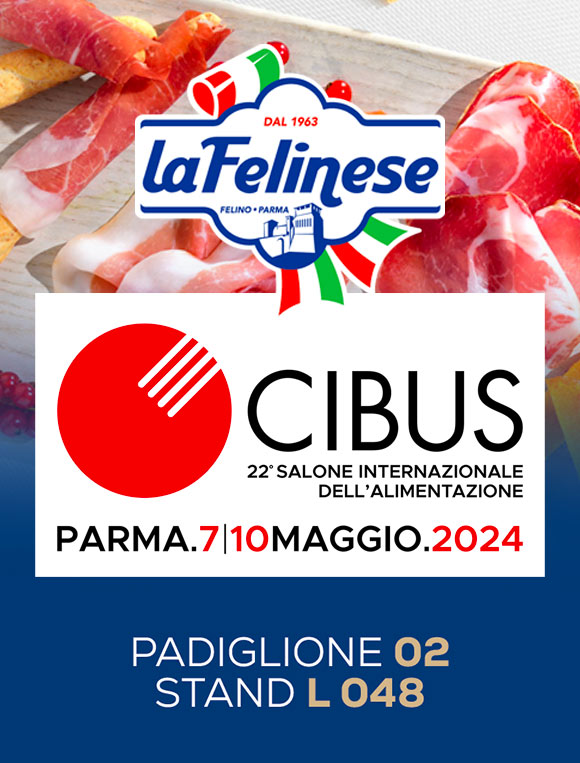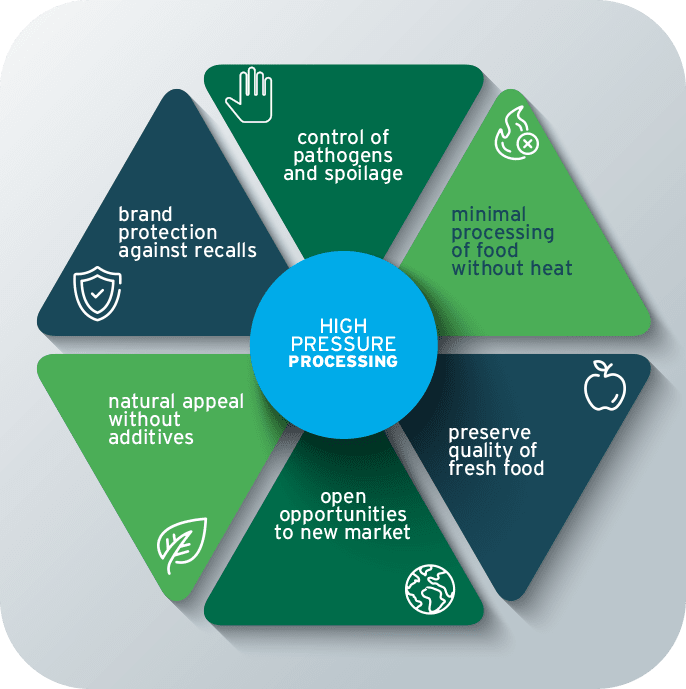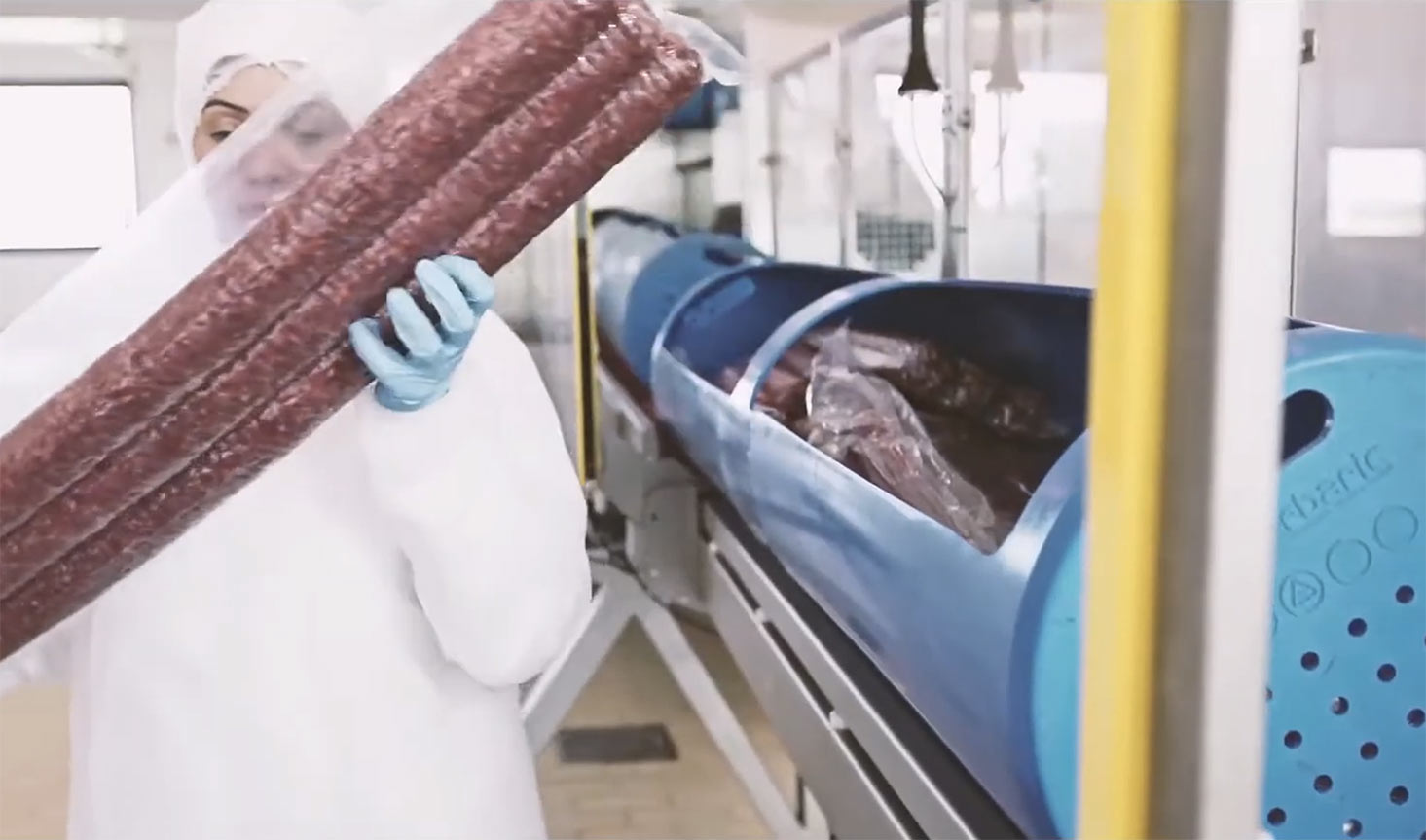
HPP Technology
HPP Technology
HPP (high pressure processing), also known as high pressure pasteurization or cold pasteurization, is a food and beverage processing technology that ensures their safety by de-activating numerous pathogenic microorganisms (in particular listeria and salmonella), enabling a longer shelf life, while keeping the organoleptic and nutritional properties of the products intact.

The food and beverages, already in their final packaging, are subjected to a high level of hydrostatic pressure (6,000 bar / 600 MPa / 87,000 psi), transmitted through water and maintained for a few minutes.
This pressure is transmitted uniformly and instantaneously throughout the product, thus obtaining an effect equivalent to pasteurization, but without the use of heat, which would alter the organoleptic properties of the products.
This innovative technology was first used in Japan in the 1990s to preserve fruit juices.
Today it is mainly applied to meat and fish products to ensure their microbiological safety, while at the same time significantly extending their shelf-life.
HPP Technology
La Felinese was one of the first companies in Italy to invest in HPP technology for the food safety of its products.

HPP (high pressure processing), also known as high pressure pasteurization or cold pasteurization, is a food and beverage processing technology that ensures their safety by de-activating numerous pathogenic microorganisms (in particular listeria and salmonella), enabling a longer shelf life, while keeping the organoleptic and nutritional properties of the products intact.

The food and beverages, already in their final packaging, are subjected to a high level of hydrostatic pressure (6,000 bar / 600 MPa / 87,000 psi), transmitted through water and maintained for a few minutes.
This pressure is transmitted uniformly and instantaneously throughout the product, thus obtaining an effect equivalent to pasteurization, but without the use of heat, which would alter the organoleptic properties of the products.
This innovative technology was first used in Japan in the 1990s to preserve fruit juices.
Today it is mainly applied to meat and fish products to ensure their microbiological safety, while at the same time significantly extending their shelf-life.